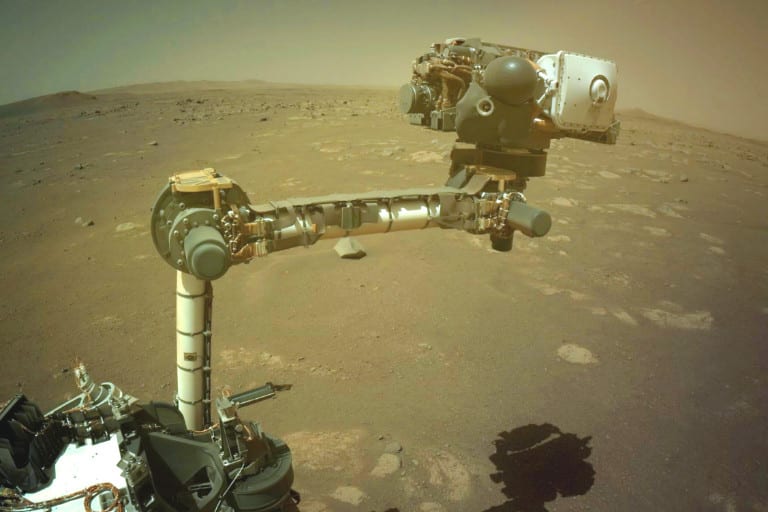Perseverance’s Robotic Arm Brings Mars Within Reach of Geologists
Understanding Mars’ geology is one of the four goals (1) of the Perseverance mission, so the rover is a self-contained geology field lab.
The top-line purpose is learning to what extent Mars was once capable of supporting life. The Planetary Instrument for X-ray Lithochemistry (PIXL) and Scanning Habitable Environments with Raman & Luminescence for Organics and Chemicals (SHERLOC – yes, there’s a WATSON on board, too) use cameras, spectrometers, X-rays and lasers to look for microscopic remnants of life.
The second purpose is about planning for the future. For Mars to support human life, we first need to know what it has that could help sustain us. Humans will not be able to establish a long-term presence on Mars (2) if those Martian converts are dependent on Earth for everything. Our Martian ambitions will founder if, as Shane Lasley of Metal Tech News put it, we have to “rely on the expense of rocketing goods beyond the gravitational pull of Earth and then another 171 million miles to the Red Planet.” Our ability to tap the Red Planet for water and minerals necessary for construction or energy generation will determine how many people we can have on Mars, and for how long at a time.
Many of Perseverance’s other on-board geological sensors will perform the foundational mineral surveys of the planet. From 4K video and 3D pictures to chemical analysis, Perseverance will let earthbound geologists know what’s up there that we may someday be able to use.
But any geologist will tell you that nothing compares to getting your hands in the dirt and on the rocks, and then bringing them back to your lab for detailed analysis.
Fortunately for NASA’s geologists, Perseverance is their co-worker, not their replacement.
Robotic arms on Mars today, Martian samples on Earth by 2030
Perseverance’s robotic arm is dexterous enough to not only grab and analyze samples, but collect them. The rover will tag them with precise location data and keep them isolated from each other. It will then stash these samples in predefined pick-up points, so one of its descendants can come through in a few years, retrieve those samples, drive them to an Earth-bound rocket and – sometime before the end of the decade – have them in the hands of geologists back on Earth.
As Motiv’s co-founder Tom McCarthy told Metal Tech News:
“Now that we have a rover that is on the surface of Mars that has the ability to encapsulate these materials and harvest them for work or study, we would definitely like to be part of the whole ecosystem of sending something, go get these samples, and then bring them back. It would be very exciting for us to be a part of that journey.”
And that’s another easy-to-recognize great idea.
Motiv Space Systems delivered to JPL/NASA the most capable robotic arm in its campaign to search for life on the Red Planet. Learn more about Motiv’s work on the Mars 2020 Perseverance rover.
